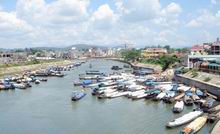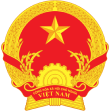New regulations on cross-border trade activities
VGP – The Government just issued a new decision providing new regulations on cross-border trading activities.
The
decision, which will replace the PM’s Decision 254/2006/QĐ-TTg dated on
November 7, 2006 on management of cross-border trade activities, is scheduled
to come into effect on March 1 next year.

Cross-border
trade activities include the purchase, selling and exchanging of goods among
residents living in the border areas; trading activities at border or
border-gate markets and markets located in border-gate economic zones; and cross-border
export-import activities in line with bilateral trade agreements between Việt
Border
trade goods must bear tariffs or other charges under the current Vietnamese
regulations and enjoy export-import tax preferences stipulated in the bilateral
agreement between Việt
Noticeably,
the decision says goods produced in the countries sharing the same borderline,
once imported into Việt
Other
regulations on junior border-gates were also amended, according to the
decision. As a result, people, vehicles and goods will be allowed to freely
move through these border-gates.
|
According
to the latest report made by the Ministry of Industry and Trade, cross-border
export and import values between Việt |

